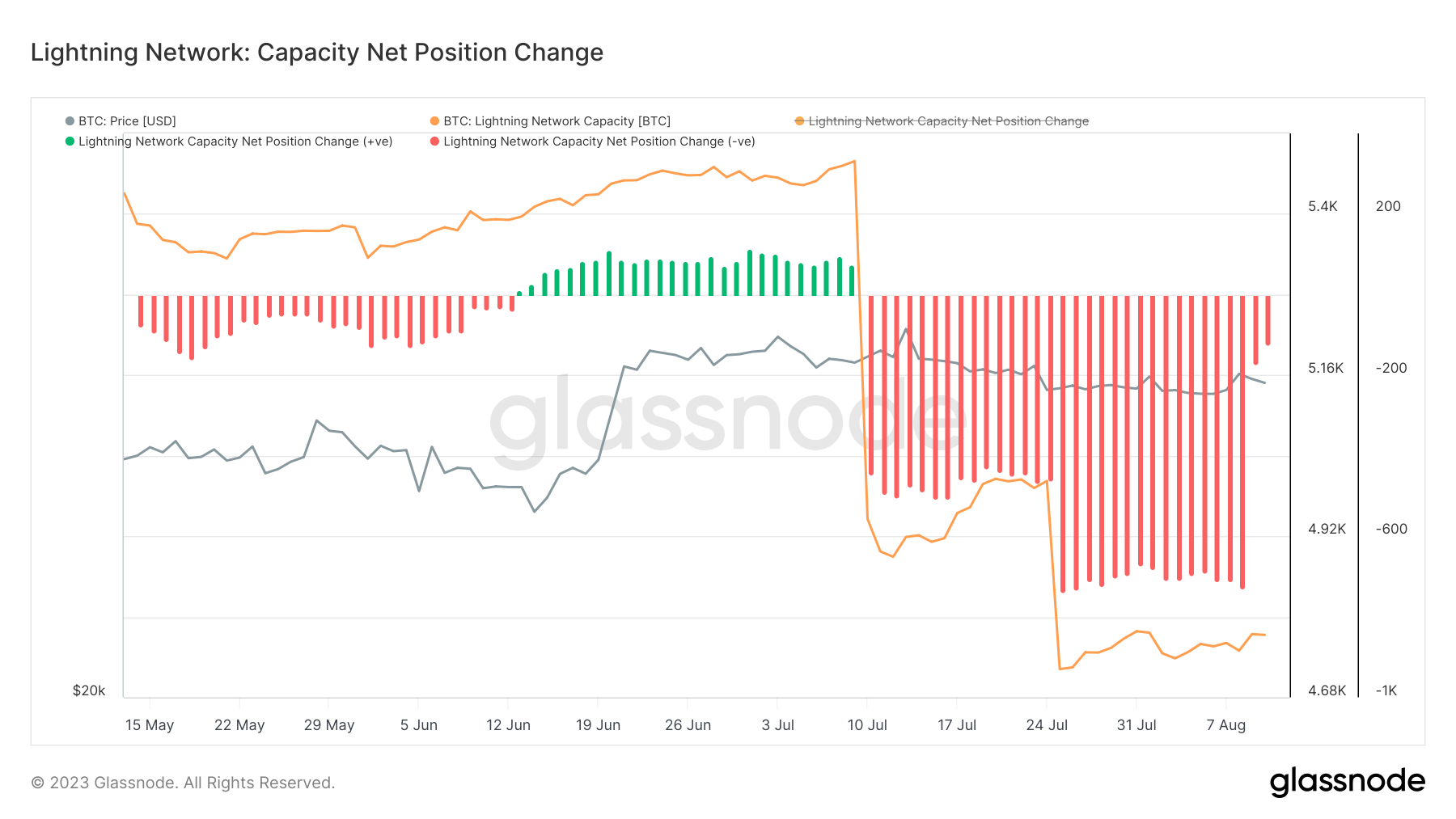
The Lightning Network is a Layer-2 solution designed to address Bitcoin transactions’ scalability and speed issues. It creates off-chain payment channels that allow users to conduct transactions almost instantly and at a fraction of the cost compared to traditional on-chain methods.
By enabling multiple transactions to occur off-chain and only recording the final balance on the main blockchain, it can alleviate congestion and reduces fees, making microtransactions more viable and enhancing the overall efficiency of the Bitcoin network.
The growth of the Lightning Network can indicate more people are using Bitcoin for everyday transactions, a sign of wider cryptocurrency adoption. Changes in the Lightning Network can also reflect shifts in market sentiment — a sudden increase in capacity could indicate a bullish sentiment as more users seek access to quick and cheap Bitcoin transactions, and vice versa.
Lightning Network capacity refers to the total amount of Bitcoin transacting within the network at any given time. A decrease in capacity could hinder the network’s ability to process many transactions. According to Glassnode, the Lightning Network’s capacity dropped significantly between July and August, decreasing by almost 13% in the past 30 days.
